Description of Gypsum Board Production Line
Gypsum Board Production Line consists of an automatic batching system, plate type forming system, mixing machine, auto edge-adjusting, fixed length cutting, turnover transverse conveyor, transverse hot air drying system, auto tracking mechanism, humidity and temperature auto control device, automatic wrapping and binding device, auto packaging system, etc. The batching system features simple operation of 20 types of powder and slurry, and our gypsum board production line can automatically adjust metering and adding of each main and auxiliary materials. In order to keep abreast of the newest in technology, we've introduced hard-edge mixer and transverse wind dryer technology to make prototype, which was successfully applied to production lines (exported to America and Mexico). In addition, through learning from advanced American technology, we've succeed in testing natural gas direct-fired drying technology on production line(annual production: 15 million square meters) which is exported to Italian Gessi del Lago d'lseo Spa Company. To better improve the thermal efficiency of the dryer, our gypsum board production line uses recovery technology of waste heat, resulting in energy saving and environmental protection.
Detailed Information of Gypsum Board Production Line
1.1 Product Solution
Length: 1800~3600mm
Width: 900~1250mm
Thickness: 9.5mm~25mm
Through adjusting formula, the production line can also be used to produce waterproof and fireproof gypsum board.
1.2 Quality Standard
The quality of Gypsum Board Production Line conforms to GB/T9775-1999 standard. For example, main specifications of 9.5mm thick gypsum board should meet the following requirements:
Net weight
|
≤6.5 kg/m2
|
Moisture content
|
≤1%
|
Longitudinal breaking strength
|
≥500 N
|
Transverse breaking strength
|
≥180 N
|
1.3 Output
1-50 million square meters/year, the Gypsum Board Production Line can also be customized to users' output requirements.
1.4 Material Balance Calculation (e.g.: 9.5mm Thick Gypsum Board)
No.
|
Item
|
Actual Consumption (kg/m2)
|
1.
|
Stucco
|
5.8
|
2.
|
Cardboard
|
0.42
|
3.
|
Modified Starch
|
0.06
|
4.
|
Foaming Agent
|
0.0089
|
5.
|
Accelerator
|
0.15
|
6.
|
Retarder (if necessary)
|
0.004
|
7.
|
Paper Fiber
|
0.0556
|
8.
|
Adhesive Glue
|
0.0022
|
9.
|
Water
|
4.55
|
10.
|
Glass Fiber
|
0.020
|
1.5 Manpower Requirement
No.
|
Item
|
Person / shift
|
Shift / day
|
Person / day
|
1
|
Feeding
|
1
|
3
|
3
|
2
|
Dosing section
|
1
|
3
|
3
|
3
|
Forming section
|
1
|
3
|
3
|
4
|
Drying section
|
1
|
3
|
3
|
5
|
Edge trimming and stacking section
|
2
|
3
|
6
|
6
|
Laboratory
|
1
|
3
|
3
|
7
|
Mechanical and electric maintenance
|
2
|
3
|
6
|
|
Total
|
27 persons
|
2. Brief Introduction of Process
2.1 Board-making Workshop
2.1.1 Dosing Section
All stucco hoppers are designed with max. and min. material level alarming device to avoid overloading or short loading.
The modified starch, accelerator and glass fiber are lifted to the top of the hopper by an electrical hoist, and then manually conveyed to the respective hoppers, which are equipped with min. material level alarm device.
After being metered respectively, all the powder materials in the hoppers are conveyed to the belt conveyor.
The process water is supplied to the high level water tank by an electric water valve. When the high level water tank is full, the water overflows into the low level water tank, and then is conveyed to the vertical mixer after being metered by metering pump. If the gypsum board production line is powered off, the water in the high level water tank can be used to clean the mixer.
The foaming agent is added to the storage tank quantitatively. When using, the foaming agent and water are sent to the foaming device separately. Then, compressed air is conducted to produce stable foam, which will also be conveyed to the vertical mixer after being metered by metering pump in the foaming station.
The waste paper and water, with a certain proportion, will be prepared to pulp in the hydropulper. The pulp will be fed into a pulp storage tank via a screw pump. In the tank, the pulp will be diluted by the water to the required consistency and then fed to the vertical mixer through a metering pump.
The stucco is supplied to the belt metering scale by a frequency-conversion speed-governing feeder, the belt scale gives a feedback to the feeder so as to control the dosage, and then the stucco is conveyed to the mixing screw conveyor after metering. All the powder additives are conveyed to the mixing screw conveyor after metering, mixed in the conveyor and conveyed continuously to the vertical mixer.
2.1.2 Forming Section
Edge bonding additive is evenly applied to the binding part of the upper and lower paper via a applicator.
The upper paper and lower paper are conveyed to the paper return device by the electric hoist. The lower paper continuously passes through paper receiver, correcting machine, marking machine, and then is sent to the forming station by the vibration platform. The slurry which is produced from various powder materials and liquid in the vertical mixer flows on the lower paper surface in the forming station. Meanwhile, the upper paper have also passed through the paper receiver, correcting machine and applicator, and reached the forming station. The upper paper and lower paper then press the slurry onto the forming board according to required shape and thickness. The formed gypsum board is hardened to certain hardness when passes through the solidification belt conveyor. The conveyor is also equipped with the paper pressing device, dripping device and leveling device to facilitate pull-out, bonding and forming of gypsum board.
The gypsum board enters into the roller belt conveyor from the solidification belt conveyor for further solidification and transportation. The speeds of both conveyors should be synchronized, which can be realized by adjusting motor frequency. These conveyors are equipped with rope pull emergency stop switches.
The motor drive systems of solidification belt conveyor, roller belt conveyor and accelerating roller are controlled by AC frequency controller.
2.1.3 Cutting and Drying Section
The fixed length cutting machine cuts the gypsum board conveyed by roller conveyor as per specific requirement, and the cutting accuracy can be controlled within ±1mm. Mitsubishi servo control system is used to control the operation of the cutting machine. The length measuring wheel transfers the board length data measured to PLC, and according to the data measured and preset length, the PLC controls the operation of the cutting machine by using servo controller to control the servo motor of the cutting machine.
The accelerating rollers consist of several independent rollers. If the board is not cut, the accelerating rollers will run at a low speed, which is the same as that of the forming line. If the board is cut, the motor turns to high speed running. It turns to low speed running again when the end of the board leaves this section.
If the operator finds out that the board needs to be rejected due to its poor quality, then he just need to discharge this board by pushing corresponding button. At this time, the conveying roller for wet rejected board is under working status.
Action of 1# transverse conveyor and various driving devices are controlled by the photoelectric switch and proximity switch. When the first board reaches the set position at the end of the feeding roller, the motor of the feeding roller will stop, and the roller frame will drop. The board moves transversely, to be turned over and conveyed to the discharging roller via turn-over device and transverse belt conveyor. When the second board is turned over, the transverse belt conveyor starts again. The two boards are sent to different layers of the dryer by the distribution machine.
The dryer is large thermal equipment with heated thermal oil as heat source. The circulating air is firstly heated through heat exchanger and then sent to each layer in the dryer. The dryer is mainly composed of board feeding section, closed section, board discharging section, heat exchanger, air duct system and waste heat recovery system.
The board feeding section is the conveying equipment featuring 8 layers of rollers. Its running speed is controlled by the computer. When the board enters, the roller will run at the same speed as the closed section. Hence, each board can be conveyed orderly. The closed section includes 2 zones. Both ends of each zone have air intake section and moisture discharge section. Many control valves are equipped to adjust the temperature of each layer of the dryer. The board which has been dried is then sent to the board discharging section.
The gypsum board collected by the board discharging machine is transported to the conveying roller and conveyor belt. Meanwhile, the gypsum board is cooled to a proper temperature.
2.1.4 Edge Trimming and Stacking Section
The two rows of boards sent by the belt conveyor move to 2# transverse conveyor. When the board enters the lift roller, and the front edge touches the photoswitch, the rollers will speed up. When the front edge of the board is at a certain distance from the baffle plate, the rollers are converted from the high speed to the low speed, and the board goes forward at a low speed and stops in front of the baffle plate. At this moment, the lift rollers will lower down, and the board drops down to the belt conveyor. At the same time, the belt conveyor immediately starts to run and transversely conveys the board for the second time. When the back end of the board goes away from the belt conveyor, the belt conveyor stops, and the baffle plate lowers down, the roller lifts up again. The baffle plate can move automatically forward and backward, and can be adjusted to the corresponding position according to the length of the plasterboard. Generally, the baffle plate is adjusted to the set position by shortening the distance. During operation, the brake device continuously works to avoid shifting of the baffle plate.
The binding machine primarily consists of the belt conveyor and binding equipment. When the board enters the binding machine, the first photoswitch will start working. If there is only one board on the conveying belt, the binding machine will not work and the board will be conveyed away from the belt directly. If there are two boards on the belt, the binding machine starts working. After binding, the turn-over arm will lower down to touch the proximity switch, the motor stops and the conveying belt sends the two boards to edge trimming and packing machine. The next procedure is alignment. The horizontal alignment of the bound boards is realized by the remote position regulator, and the vertical alignment is achieved by the stand. After this, the board will be sent to the saw cutting system.
The saw cutting system consists of pre-cut saw and main cut saw. When cutting, first pre-saw cuts the board from the bottom, and then the main saw will be used. The main cut saw cuts the waste edge, meanwhile, the crusher knife on the main saw will crush the waste edge, which will be collected by the dedusting system.
In order to cut gypsum board of different length, the working width of the edge trimming and packing machine is adjustable.
The packing system is installed on both sides of the trimming machine. One is fixed, and the other is movable with the moving arm. The system primarily consists of paper unloading, gluing, pressing and cutting parts. Uncoiling of the paper is driven by moving the board. The movement speed of the edge packing belt conveyor and the trimming machine should be synchronized. The isolation block on the non-driving belt ensures certain gap between boards. When the board stops moving, the gap is just on the location of the cutter. In this case, the continuous paper band can be cut.
The finished product will be sent to the finished product push roller (I) and ready to be stacked. The aligning cylinder will align the board in the direction of width. The other aligning cylinder on the stacking system will align the board in the direction of length. When stacker No.1 is full, stacker No.2 will start working under computer control. Stacking platforms No.1 and No.2 work in turn to finish stacking the finished products. Finally, the finished products will be transported to the warehouse by the forklift.
Manufacturers and suppliers of plasterboard, wallboards, lining boards, gypsum board and drylining systems for the UK construction industry. Develop and encourage the understanding of gypsum based building materials and systems. Manufactures and markets of plywood, gypsum boards, lumber, and engineered wood products, including laminated veneer lumber (lvl), glulam beams and fiberstrong rimboard. Overview of product lines and vertical markets.
Manufacturers and suppliers of plasterboard, wallboards, lining boards, gypsum board and drylining systems for the UK construction industry. GIB specialists; they supply, fix, stop, cove and paint interior linings. Manufacture mineral renders made from all natural materials based on cement, lime and sands produced in New Zealand.
Develop and encourage the understanding of gypsum based building materials and systems. A fully-integrated manufacturer and supplier of products and services used worldwide in building and construction, with primary emphasis on gold bond brand gypsum wallboard and joint treatment compounds. Manufacturers of wallboard in the United States
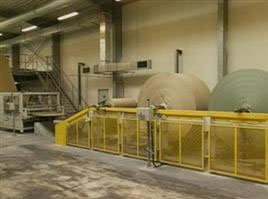 Gypsum Board Production Line
Gypsum Board Production Line
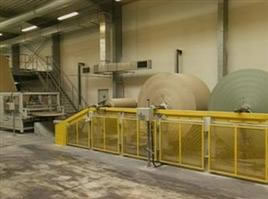 Drywall Making Equipment
Drywall Making Equipment
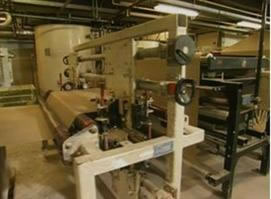 Gypsum Board Making Machine
Gypsum Board Making Machine
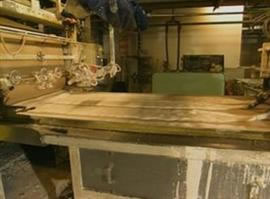 Plasterboard Production Line
Plasterboard Production Line
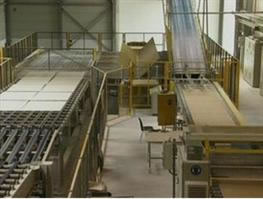 Gypsum Wallboard Machine
Gypsum Wallboard Machine
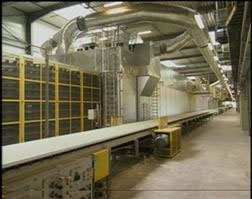 Gypsum Panel Production Line
Gypsum Panel Production Line
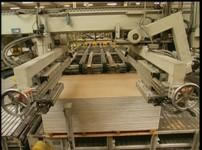 Moisture Resistant Gypsum Board Production Line
Moisture Resistant Gypsum Board Production Line
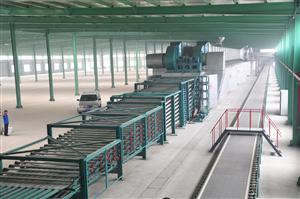 Fire Resistant Gypsum Board Machine
Fire Resistant Gypsum Board Machine
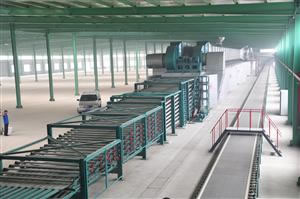 Regular Gypsum Board Equipment
Regular Gypsum Board Equipment

